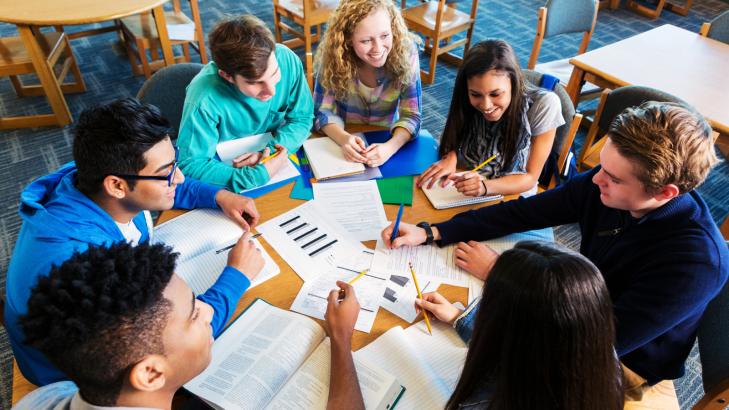Many contemporary educational theories have surfaced, outlining the core tenets that the teacher and the student must adhere to for the educational pyramid to be successful. We will discuss the most significant of these theories in this article.
Behavioral Theory
This theory was developed by Watson and Skynes after Pavlov in 1912 and was founded on repetition and trial-and-error learning. One of the prerequisites for learning is that "failure is the path to success." The foundation for this theory was Pavlov's well-known dog experiment.
Pavlov and his successors found that learning is the result of the relationships between the experiences of the learner and the responses they have shown to these experiences, and the success of the educational process must be enhanced, which is an effective tool for learning and behavior modification. Behavioral theory sees the individual's personality does not form with their birth, but rather, its shape is based on a series of actions influenced by outside variables.
Some people opposed that view and found that it focuses on the experimentation and application process to obtain knowledge and only external influences that can communicate what is intended and neglects everything related to self-will. Some of them disagreed with the idea of applying this theory to humans and animals once human perception equals that of animals because humans are constantly seeking out scientific guidelines that advance our understanding and embrace anything that aids in improving our level of learning.
The Gestalt Theory
As a result of the objections that affected the behavioral theory, other "Gestalt" theories emerged, and several names emerged for their pioneers, the most important of which were the German "Max Fritmer" and the American "Kurt Kovka" and others between the years (1880- 1943).
The Gestalt theory started from the principle of (the whole to the part). The teacher and the learner analyze the studied material into parts, focus on each alone, link them, and conclude the relationship between them. Understanding is its basis and linking its law.
This theory does not believe in attempts and mistakes. It is concerned with the laws of perception and behavior. The learner must know the characteristics of the educational situation. It is also concerned with thinking, solving problems, and other mental processes. Clairvoyance and understanding are more worthy of trying and error and more effective in achieving positive education.

Under the title of this theory, several principles and laws have been developed according to which cognitive processes follow, and these principles are:
- The principle of form.
- Principle of Similarity.
- Principle of Closure.
- The Principle of Convergence.
- The principle of directional sharing.
Despite the success and spread of this theory and its positives, it has been criticized. Others have found the beginning of human clairvoyance different from the animal. A person is distinguished by reason and is responsible for organizing and understanding partial relationships.
In its drawbacks, it was stated that it relies on each person's capacity to ignore individual differences. The aptitude varies. Even the same person experiences things differently depending on the educational setting. It also asserts that excitement is necessary for human behavior before it manifests. Therefore, it is impossible to establish precise guidelines and bases for measurement.
With all these negatives from the point of view of researchers, this theory contributed to changing and developing educational policies in several countries, so they followed its approach to education. It starts with providing the comprehensiveness of the material and then partially according to the gradual transition from the whole to the part without affecting the content of the internal material and achieving insight into each one alone.
Constructivist Theory
The word's origin is Latin; it means how a building is built or, in an obvious sense, the construction. The roots of this theory were attributed to Jean Piaget (1980-1986), who provided several definitions of it, to the effect that the child's thinking patterns arise due to the interaction between its innate abilities and experience.
Piaget provided foundations for this theory, enabling the learner to rely on it to obtain helpful and valuable results. He stressed that knowledge is inside the mind, and the learner must interpret what they receive, and the meaning or concept is based on what they have of information. Learning is linked to the relationship between the self and the subject. He also stressed that reasoning is a condition for building the concept, and then the error is a condition for learning in solidarity, here, with behavioral theory.
This theory was influenced by Gestaltism, which holds that understanding is the basis and experience is a prerequisite for learning, as behaviorism rejects indoctrination. "Piaget" relied on his theory of the development of children through their careful observation during their developmental years, and he developed several hypotheses to support his idea, including:
- Mental schemas or called them (mental buildings).
- The process of assimilation or representation.
- the act of fitting in or becoming accepted.
- The process of equilibrium or so-called adaptation.

It is important to emphasize that this theory is currently used in many fields and has gained much popularity. For instance, it was used in the Department of Education and went through three stages: concept discovery, concept introduction, and concept application. It was also used in education, where it went through six stages: submission, group education, individual education, feedback, learning responsibility, and learner independence.
Features of Constructivist Theory Applications
- This theory makes the learner the focus of the educational process, as they are essential and discovering, researching, deducing, and implementing their activity.
- This theory allows the learner to role-play and develop a positive attitude towards the scientific figures, life issues, or societal problems he represents.
- The learner learns by themselves the importance of using science in society and its role in solving the problems of his community and its surroundings.
- The constructivist theory allows the learner to think scientifically and find as many solutions as possible to be employed later in societal and life issues.
- In the modern era, constructivist learning theory is integrated with the cooperative learning strategy to develop a spirit of cooperation and teamwork. In this way, the educational process achieves one of its most important objectives on a large scale.
Cognitive Theory
Taking note of the various theories that have been repeated over unexpected periods is not easy, but it is not impossible. Through research, we will enjoy learning about their roots, content, applications, benefits, positives, and finally negatives. This research is one of the goals of the theories.
Cognitive theory is one of the most prominent modern learning theories that emerged from the German scientist "Font", who was interested in the associative approach of human consciousness using experience to form knowledge. The scientist "Font" was famous for his reliance on higher mental processes, including remembering, thinking, and imagining, and through these processes he obtained helpful results later and postulates adopted by other scientists to develop his theory.
.jpg_875aab8cc31e0f2_large.jpg)
From Font to Chomsky, who contradicted behavioral theory and its ideas, this contradiction was the cornerstone of the emergence of cognitive theory. According to Chomsky, that theory focused on higher mental processes and mental treatments and used thinking to organize education and achieve harmony with the environment.
This theory has been referred to by a large constellation of scientists such as Edward Tolman, Jerome Bruns, Avram Noam Chomsky, Kurt Levine, David Ozbel, and others. However, Jean Piaget is the best to study this theory, and attributed to him. Describing the book (Cognitive Theories of Learning), this theory is considered a comprehensive theory used to explain mental processes and confirms that mental processes are greatly affected by external and internal factors for an individual to be able to learn.
The pioneers of this theory criticized behaviorism and gave great importance to their theory. They found that sources of knowledge and learning strategies focus on attention, understanding, memory, reception, and information processing.
Knowledge from the cognitive theory perspective refers to the interaction of content with mental processes, and a cognitive structure is installed through which we can integrate and mix information and previous experiences with new data. The human mind has a massive ability to process details and then store and employ them.
When a problem arises, for instance, the mind's job is to use the stored resources to solve the problem by mobilizing them. Cognitive growth depends on the sequence of information to reach the goal or solution, and the link between previous learning and new learning makes it easier for students to adapt to their experiences and rely on the excitement of motivation and pre-testing and diagnostic tests that are used at the beginning of teaching to clarify the skills that the learner master.
Mechanisms for applying modern learning theories in education
In general, each theory has a mechanism of action adopted to reach knowledge. It was formulated according to the scientists who studied this theory, and they may have differed in the terminology. However, the content is the same, and teachers have applied it on the ground in various ways according to the available capabilities. The most important of these mechanisms are:
- Asking questions through which we can draw outdated knowledge and experiences to stimulate thinking.
- Providing the opportunity to make and reinforce the mistake. The teacher poses a problem, and the learner offers various solutions that may suit the educational situation. The error could occur once every possible solution has been determined, at which point the teacher can assist in selecting the best option.
- By improving their self-reflection technique, the student can think more clearly, look for the best solutions, and hone their abilities for knowledge.
- Thinking aloud is based on dialogue and mutual interaction between educated individuals.
For example, researchers in the cognitive theory field, as studied by Piaget, found a set of advantages. It is a way to enhance learners' self-confidence and love of learning and create challenges for learners, in addition to the learner's reliance on sequential stages of learning professionally, etc.
Despite the advantages the cognitive theory offers, it has met with objections in the educational field. Researchers have recorded several negative points, including its lack of evidence and the conditions lack. Growth is an ongoing and indivisible process. In addition, Piaget overlooked the role of the environment and the role of the environment and focused only on educational stages.
In conclusion
Each modern learning theory has multiple branches and analyses, some of which were supported by acceptance, and others stood against what came in them and tried to develop their weaknesses according to a broader perspective. In the end, a simple presentation of the difference between the four theories can be made as follows:
- Behavioral theory: It used the animal as a foundation for its findings and depended on stimulus and response.
- The Gestalt Theory: It proceeded from the part to the whole.
- Constructivist theory: It proceeded from the whole to the part.
- Cognitive theory: The correct response is balanced, the absence of an answer is unbalanced, and coming to the proper conclusion is considered a new balance because it focuses on the cognitive side of taking in information and how an individual handles data.






Add comment